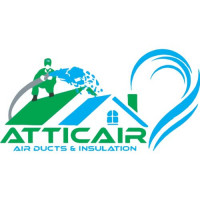Chimneys: causes of destruction and methods of reconstruction

Strong 8k brings an ultra-HD IPTV experience to your living room and your pocket.
A chimney is a structure based on a brick or steel pipe (it can be shaped like a circle or square). It is hermetically connected to the boiler or furnace and stretched to the street to ensure the release of gaseous combustion products to the outside. However, the tightness and permeability of the structure may be compromised over time, which leads to poor smoke removal and its spread indoors. Let's consider the possible causes of damage to the integrity of the chimney and methods for chimney fireplace repair.
Causes of chimney destruction
Chimneys are destroyed due to natural and artificial reasons. The first include:
Temperature changes;
The chemical activity of smoke components;
Moisture condenses on the surface as a result of the temperature difference between the inside and outside of the pipes.
Natural causes quickly lead to the crumbling of brick structures. Chimneys made of galvanized or stainless steel resist these factors better, as they are highly resistant to corrosion and temperature changes. Therefore, their destruction occurs more slowly.
Artificial causes of destruction include:
Making operational errors;
Use of low-quality materials;
Making mistakes during the installation of structures.
Typically, chimneys are destroyed due to poor-quality materials or installation errors. A structure will not last long if it is made of poorly calcined brick or constructed of galvanized steel with a damaged protective coating. Failure to comply with masonry technology or connecting sections can also cause rapid wear.
When is chimney fireplace repair needed?
Partial chimney fireplace repair or complete restoration is required if:
The seams are sealed poorly;
Cracks are visible on the walls of the pipe;
The outer part of the structure has collapsed partially or completely;
Cracks have appeared at the base of the stove (they indicate that the stove is heating unevenly, which also leads to rapid wear of the chimney).
A sign that it is time for chimney fireplace repair is a weakening of traction. But sometimes draft can deteriorate due to the chimney being clogged with foreign debris rather than masonry debris. In this case, it is not repair that is required, but cleaning of the chimney.
Repair of steel chimneys
Stages of steel chimney fireplace repair:
Cleaning the structure.
Inspect for damage.
Dismantling damaged sections.
Installation of new sections, selected by size.
Steel chimneys offer one major benefit: you can fix them without taking the entire structure apart. All you can do is take out the broken piece and replace it with a new one.
Brick chimney repair
Chimney repair made of brick is more challenging. This is because the pathway from the top point to the location of the damage discovery needs to be disassembled. Let's examine three approaches to chimney fireplace repair.
Sleeving- Using this approach, a ceramic, stainless steel, or galvanized steel pipe is inserted into a brick chimney. It is advantageous since it lessens the possibility of pipe obstruction in the future and does not necessitate the entire disassembly of the building. The following steps are part of the sleeve method:
Removing masonry from the roof down to the chimney's base.
Installing the sleeve involves joining its component portions together hermetically as it is made of them.
Installing fire-resistant insulation in the void created between the sleeve and the brickwork. By doing this action, condensation won't build up again.
Putting in a protective cover to stop rain from getting into the channel.
The outside beauty of the building can then be restored by reassembling the dismantled stonework. You may use both fresh and ancient bricks for this.
Brickwork- This is the term for the procedure that fortifies a chimney's interior walls by applying a chemical that resists flames. Typically, granite chips are used as the base for preparation. The sequence of application is as follows:
Cleaning of the chimney duct using mechanical means.
Adding moisture to masonry walls.
Saturating their surface with the prepared mixture.
It is necessary to line up three times. It is only possible to spray the mixture a second and third time once the first layer has solidified. A chimney with lining will endure for many more years.
Polymer inlays for restoration- Since polymer liners are put similarly to sleeves, there isn't a space that has to be filled between them and the brick walls. The following actions are part of this restoration method:
Clearing the debris from the chimney.
Putting in a polymer lining within the conduit.
High-pressure air injection into the liner followed by steam.
These adjustments cause the polymer liner to swell and assume the form of a brick chimney. By doing this, the walls get stronger and are kept from collapsing further. However, these liners are limited to usage with gas boilers. This is because the polymer substance has a comparatively poor heat resistance. Boilers that burn solid fuel produce hotter chimneys. Earbuds are therefore inappropriate for them.
Final Words
In conclusion, maintaining the integrity of chimneys through timely repairs is crucial for ensuring safe and efficient ventilation of combustion by-products. Whether repairing steel chimneys with minimal disruption or restoring brick chimneys with innovative methods like sleeving or polymer liners, proactive maintenance extends their longevity and functionality.
Note: IndiBlogHub features both user-submitted and editorial content. We do not verify third-party contributions. Read our Disclaimer and Privacy Policyfor details.


